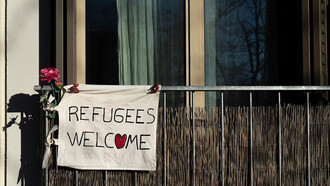So, let’s talk about men and trees.
Not in a “chopping wood on a Sunday morning” kind of way, but in the deeper sense, namely how ideas of manhood have literally shaped the way we treat forests, the climate, and the planet. Sounds dramatic? It is. Because while most of us think of masculinity as a social issue and deforestation as an environmental one, the truth is, they’re tangled roots of the same problem.
For decades, the story of the forest has been a story of dominance. You know the image: the rugged lumberjack, ax on shoulder, taming the wild. Fast-forward a century, and he’s evolved into the forest manager in a Patagonia vest, laptop in hand, talking about “resource optimization.” Different outfit, same logic—control the forest, make it produce, and call that success.
Researchers have a term for this: “industrial breadwinner masculinities.” Basically, it’s the idea that being a “real man” means providing through acts of extraction such as mining, logging, conquering, and expanding. The forest isn’t a living being in this worldview; it’s a spreadsheet. It’s something you cut down, sell off, and replant just enough of to keep the business model going.
And the consequences? You can guess: loss of biodiversity, rising emissions, disrupted communities, and, let’s be honest, a pretty toxic version of manhood too.
Here’s where it gets even more uncomfortable.
It’s not just about how men act in forests—it’s also about how some of them think about climate change. Studies have shown that small but loud groups of mostly white, Western men are among the most likely to deny or downplay the climate crisis. Why? Because admitting that the planet is in danger, that we might have to change, that control isn’t infinite—that’s not exactly what the old script of masculinity teaches.
In forestry, that plays out in resistance to change. Even when the data screams, “The system is broken,” sticking to the old model feels safer—and more “manly”—than acknowledging vulnerability or uncertainty. So, yeah, gender norms can literally delay climate action. Wild, right?
Not all masculinities are created equal
Here’s the twist: masculinity isn’t doomed. It’s not inherently destructive. Like forests, it’s diverse, adaptable, and capable of renewal. Across cultures, you find examples of what some scholars call “nurturing masculinities.” These are ways of being a man that emphasize care, responsibility, and interdependence—qualities that are just as strong as dominance, only way more sustainable.
Think of the men in indigenous or rural communities who know the forest like family—who understand animal tracks, rainfall patterns, and tree behavior. For them, protecting the forest isn’t weakness. It’s wisdom. It’s duty. It’s identity.
So, no, masculinity isn’t the enemy. But the version of masculinity that worships control, profit, and domination absolutely is.
The catch is that our systems haven’t caught up. Forestry schools, government agencies, and industry structures still tend to reward traits like “assertiveness” and “rational management.” Meanwhile, relational skills like cooperation, empathy, and community listening are treated like nice extras, not essentials. The result? Local and Indigenous knowledge gets sidelined, even though it could be key to climate resilience. And we stay stuck in the old “man vs. nature” mindset, like it’s still the 19th century.
Luckily, there’s a new framework making the rounds in environmental circles: ecological masculinities. Think of it as masculinity with a conscience—less “I conquer nature,” more “I coexist with it.”
It’s built around three simple shifts: from control to care, from separation to connection, and from exploitation to responsibility.
There’s even a model for it—the ADAM-n framework—that lays out five steps for transforming masculinities:
Awareness: realizing how destructive versions of manhood harm both people and the planet.
Deconstruction: questioning the myths of control and domination.
Amendment: taking responsibility, even for past damage.
Modification: creating new practices like regenerative forestry or community-based management.
Nourishment: building long-term, caring relationships with the forest and the life within it.
Sounds idealistic? Sure. But so did women voting once.
What does this look like on the ground?
It looks like men who plant instead of plunder. Foresters who listen to local elders before drafting management plans. Urban planners who see the forest not as timber, but as a partner in climate survival.
It’s also about changing stories—the ones we tell our kids, our students, and our colleagues. Because as long as the “real man” is the one who cuts, conquers, or commands, we’ll keep getting the same results: exploitation disguised as progress.
But let’s be real: transforming masculinity isn’t going to happen overnight. Economic pressures, cultural pride, and political inertia all stand in the way. It’s hard to rethink gender when an entire industry and a global economy have been built on extraction. But maybe that’s exactly why it’s so urgent. Because climate change isn’t waiting for us to feel ready.
Here’s the thing about forests: they don’t lie. They show us exactly who we are and how we live. When we destroy them, we’re not just erasing ecosystems—we’re revealing a mindset that values domination over care. And when we protect them, we prove that strength doesn’t have to mean control.
So, the question isn’t just how to save the forest. It’s also: what kind of men, what kind of people, do we want to be while trying?
The future of our forests might depend less on new technology or policies and more on whether we can imagine a masculinity that heals instead of harms—and maybe, just maybe, the most radical thing a man can do in the age of climate crisis is learn to care.















